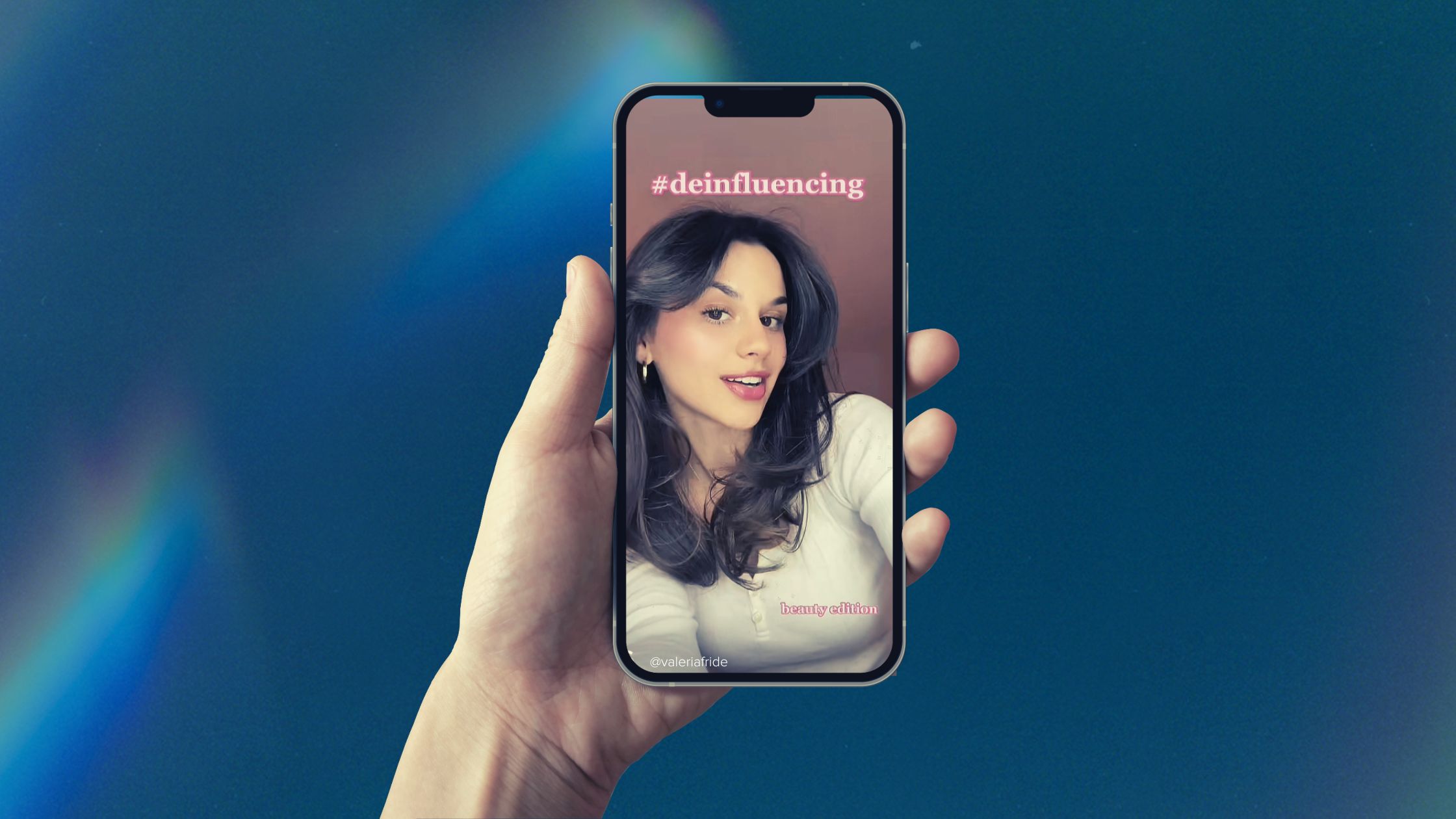In a world where every industry has a multitude of influencers, how are we to know what is, or isn’t, worth the price or the hype? Enter: “deinfluencing,” or the rejection of influencer culture. Deinfluencing has taken over social media in the last few months, driven by peoples’ desire for authenticity, and frankly, to save money. The term currently has more than 353.3M views on TikTok alone, making it worth watching.
Essentially, the new social media trend has gained traction from content creators who talk about or tell their audience which brand and trending products aren’t worth it, oftentimes offering a cheaper alternative. This luxury make-up product is no better than this drug store make-up product, for example.
Deinfluencing has been revered as “the rise of anti-influencers,” “anti-trend,” and “the trend that’ll save your wallet.” However, it’s still a form of influencing, just influencing people not to believe the hype over every trending item they see.
Now, it’s worth noting that some are calling deinfluencers the new influencers, with their opinions valued higher because they are deemed more authentic. This has also led to an influx of users hopping on the trend to increase their own following, and in some instances, to partner with brands for sponsored content in the form of the deinfluencing trend.
A marketing professor quoted in the Washington Post said, “I think that the deinfluencers are going to get such a following because negative information is believable, so they’re going to get the believability ratings that the influencers used to get.”
On the other hand, deinfluencing still signals a move away from impulse purchasing anything from the #TikTokMadeMeBuyIt hashtag, and whether it’s from influencer fatigue or high inflation forcing people to be more conservative in their spending, it’s a significant trend brands and organizations should have on their radar.
Emma Austin, a social media marketing manager, who has been very outspoken on “deinfluencing” on TikTok, says the trend is about “putting the power back into the consumers’ hands instead of just jumping on every single person’s opinion.” It encourages people to think before buying and practice conscious consumerism instead of pulling out their wallet for every item someone tells them they need.
It also increases credibility. “More honest creators means more trust from the consumer, and more trust means a higher saturation of sales, consideration, awareness – whatever it might be – centralized around each creator a brand works with,” according to PRWeek.
So, what does all this mean for nonprofits and socially responsible companies?
It means people, more than ever, are craving authenticity and looking to spend their money more consciously. Consumers are being more discerning over what they buy and who they give their money to, so instead of marketing your product or service as the next trending thing, lean into how it outlasts trends. Partner with influencers who truly have an affinity for your product or brand because consumers can tell when someone authentically likes and believes what they’re talking about.
Nonprofits could lean into this new era of deinfluencing by suggesting their audience ditch buying that new trending product and instead give that money to them because it will go directly to helping people and communities in need. Nonprofits could take it one step further and market a monthly subscription service to take the place of consumers’ monthly impulse trend purchases so they can do some real good for the world.
Another significant lesson from deinfluencing is millennials’ and Gen Z’s fatigue of overconsumption. Fast-fashion and impulse purchases that might be used once and never again add to carbon emissions and have a harmful impact on the environment. Today, younger consumers are looking to put their money toward products and services that they deem are worth it to avoid the overconsumption that has taken over mainstream social media.
Another positive outcome of deinfluencing is the benefits it can have on the environment. Some climate activists have taken to TikTok and used the trend as a way of educating people on the harm some of these popular influencer-hyped products can have on the environment.
In a world where we are constantly marketed to, consumers desire transparency and trust. Organizations that build relationships with influencers who are known to speak their minds, tell it like it is, and don’t sugarcoat, but truly value products or brands that fit organically into their content, audiences will be more apt to support the company or cause.


